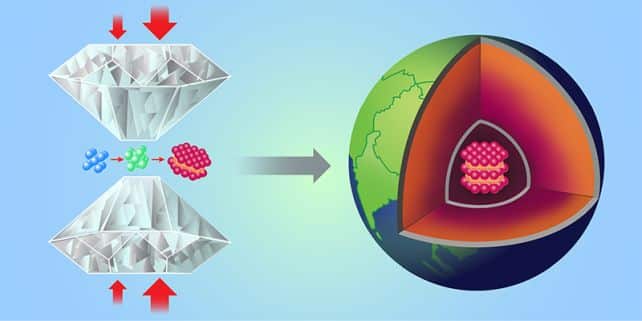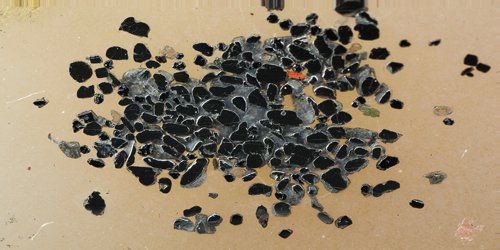Agnes Dewaele and his team of researchers fromUniversity of Paris-Saclay they harnessed a diamond anvil to synthesize hexaferrum, a form of iron believed to exist in the Earth's core. This discovery not only sheds light on the characteristics of our planet, but also opens new avenues for future research.
Viaggio al centro della Terra
The Earth's core has always been a mystery. How can we study something that lies thousands of kilometers under our feet? The answer may surprise you: with a diamond.

Agnes Dewaele and his team used a diamond anvil to compress the iron into a shape called hexaferrum or epsilon iron (ϵ-Fe). This form of iron is stable only at very high pressures, similar to those present in the Earth's core. But why is it so important? Because hexaferrum could be the key to understanding directional variations in Earth's core, a phenomenon known as anisotropy.
The research was published in the journal Physical Review Letters, and I link it here.
Hexaferrum, the challenge of synthesis
Creating the hexaferrum was no easy task. The atmospheric pressure we are used to is very different from that in the Earth's core. But, as the saying goes, where there is a will, there is a way. Using the diamond anvil and heat, the team was able to create high-pressure conditions, albeit only for a short amount of time.
The real obstacle was transforming iron, in its form called ferrite or alpha iron, into hexaferrum. In the past, similar attempts had led to the formation of small crystals, making detailed analysis difficult. But Dewaele and his colleagues did not give up. They took a step-by-step approach, increasing pressure and temperature in a controlled manner, until they achieved the coveted hexaferrum form.

A step forward
Thanks to this research we now know much more about the Earth's core. For example, we know that the elasticity of the hexaferrum is direction-dependent, meaning that waves propagate fastest along a specific axis. This discovery could explain how seismic waves travel across the planet.
But that's not all: French research could also help us better understand the extreme conditions at the center of the Earth. As if to say: we may never have the opportunity to get there directly (sorry, Jules Verne), but we can certainly explore its mysteries through the research and dedication of passionate scientists.


